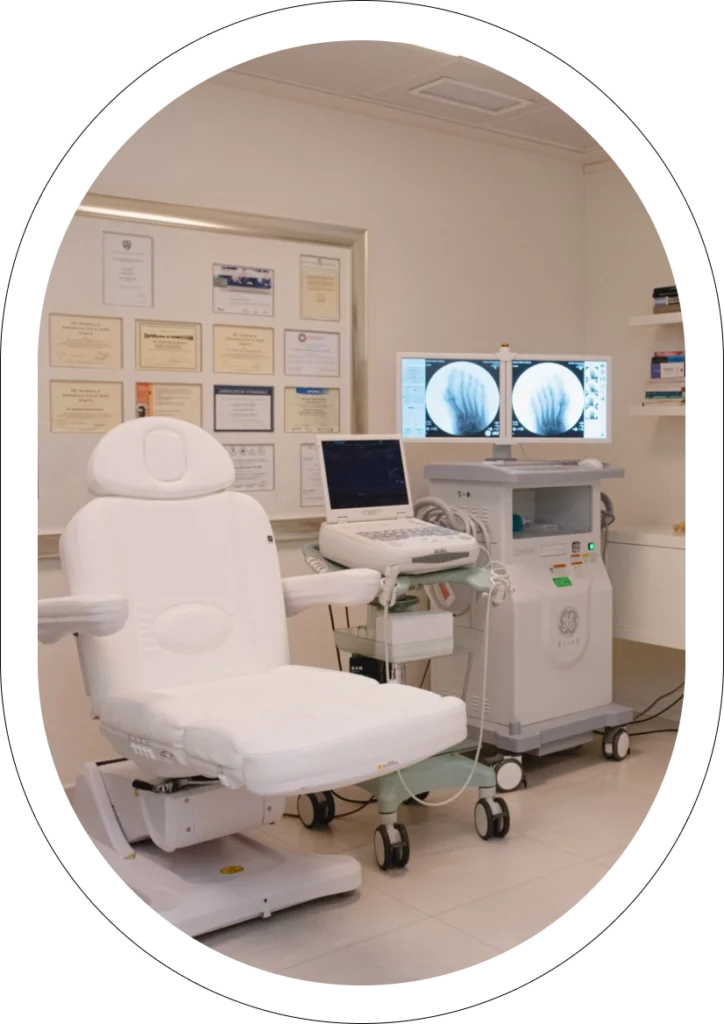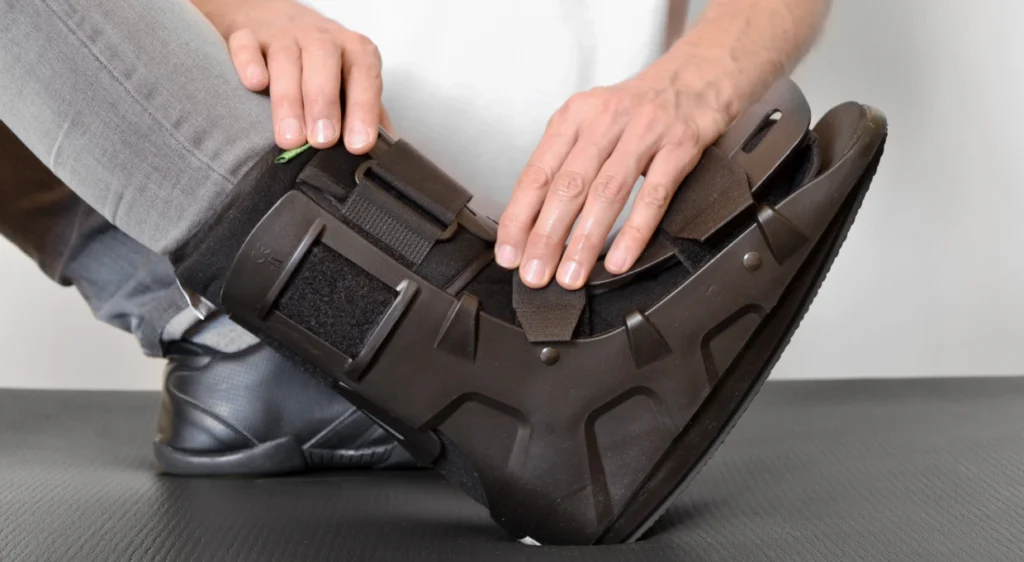Especialista en Cirugía Percutánea del Pie
Founder and Medical Director
Based on verified patient feedback
🇬🇧 Big changes, big transformations.
Every step we take is to improve our patients’ lives.
👉 Discover what we can do for you at Clínica San Román.
📲 (+𝟑𝟒) 𝟗𝟔𝟓 𝟗𝟐𝟏 𝟏𝟓𝟔
📩 𝐢𝐧𝐟𝐨@𝐜𝐥𝐢𝐧𝐢𝐜𝐚𝐬𝐚𝐧𝐫𝐨𝐦𝐚𝐧.𝐜𝐨𝐦
#cirugiasanromantop
#foot #salud #medicina #medico #medicine #esteticacorporal #podologo #foothealth #salud #Juanetes #OperaciónPie #diabetes #consejos #tips #advice

🇪🇸 Descubre cómo la cirugía MIS transforma tus pies con incisiones mínimas y una recuperación más rápida. Camina el mismo día. Contáctanos para tu valoración.
🇬🇧 See how MIS surgery transforms your feet with minimal incisions and faster recovery. Walk the same day and feel the difference. Contact us for your evaluation.
🇳🇱 Zie hoe MIS-chirurgie je voeten transformeert met minimale incisies en een sneller herstel. Loop dezelfde dag nog. Neem contact met ons op voor een evaluatie.
#cirugiasanromantop
#salud #cuidado #ClínicaSanRomán #foot #runnergirl #runners #runner #pie #pisada

🇳🇱 Zie hoe MIS-chirurgie je voeten transformeert met minimale incisies en een sneller herstel. Loop dezelfde dag nog. Neem contact met ons op voor een evaluatie.
🇬🇧 See how MIS surgery transforms your feet with minimal incisions and faster recovery. Walk the same day and feel the difference. Contact us for your evaluation.
🇪🇸 Descubre cómo la cirugía MIS transforma tus pies con incisiones mínimas y una recuperación más rápida. Camina el mismo día. Contáctanos para tu valoración.
#foot #pie #pisada #piecavo #pieplano #pisada #arcoplantar #dolor #dolorenlospies #juanetes

🇬🇧 See how MIS surgery transforms your feet with minimal incisions and faster recovery. Walk the same day and feel the difference. Contact us for your evaluation.
🇪🇸 Descubre cómo la cirugía MIS transforma tus pies con incisiones mínimas y una recuperación más rápida. Camina el mismo día. Contáctanos para tu valoración.
🇳🇱 Zie hoe MIS-chirurgie je voeten transformeert met minimale incisies en een sneller herstel. Loop dezelfde dag nog. Neem contact met ons op voor een evaluatie.
#cirugiasanromantop
#feetlovers #salud #medicina #medico #medicine #plasma #foot #juanetesevero

👣 Cirugía MIS: menos incisiones, más resultados.
Correcciones precisas, recuperaciones más rápidas y pacientes que vuelven a caminar el mismo día.
En Clínica San Román somos pioneros en técnicas mínimamente invasivas con más de 45 años de experiencia.
👉 ¿Quieres saber si eres candidato? Agenda tu valoración hoy mismo.
#foot #VerrugasPlantares #TecnologíaSwift #ClínicaSanRomán #CuidadoDelPie #PodologíaInnovadora #feetlovers #salud #medicina #medico #medicine

🔍 ¿Sabías que una cirugía puede ser rápida, precisa y con una recuperación mucho más cómoda?
💡 La técnica MIS lo hace posible.
Menos dolor. Menos tiempo. Más resultados. 👣
🎥 Mira el video y descubre cómo transformamos la experiencia quirúrgica en la Clínica San Román.
📲 (+𝟑𝟒) 𝟗𝟔𝟓 𝟗𝟐𝟏 𝟏𝟓𝟔
📩 𝐢𝐧𝐟𝐨@𝐜𝐥𝐢𝐧𝐢𝐜𝐚𝐬𝐚𝐧𝐫𝐨𝐦𝐚𝐧.𝐜𝐨𝐦
#cirugiasanromantop
#foot #VerrugasPlantares #TecnologíaSwift #ClínicaSanRomán #CuidadoDelPie #PodologíaInnovadora #feetlovers #salud #medicina #medico #medicine #Spain #Pies #Alicante #Podología #Cirugía #Foot #Salud #Cita #Medicina

👣 Menos dolor, incisiones milimétricas y una recuperación más rápida.
Con la cirugía MIS en Clínica San Román, puedes caminar el mismo día y volver a tu rutina sin largas esperas.
✨ Más de 45 años de experiencia nos avalan.
Tu bienestar empieza por tus pies.
👉 Agenda tu valoración hoy y da el primer paso hacia una vida sin dolor.
#podologia #cirugia #pies #salud #clínicasanromán #juanetes #medicina

👣 Caso real: corrección de un hallux varus como secuela de una cirugía previa.
En Clínica San Román lo tratamos con cirugía percutánea, una técnica mínimamente invasiva que utiliza incisiones milimétricas, reduce la agresión y facilita una recuperación mucho más cómoda.
✨ Cada pie es único, y en nuestra clínica valoramos cada caso de forma individual para ofrecer los mejores resultados.
👉 Agenda tu valoración y da el primer paso hacia una recuperación segura.
#foot #pie #pisada #piecavo #pieplano #pisada #arcoplantar #dolor #dolorenlospies






Recovery after Bunion Surgery: Everything You Need to Know
Recovery after bunion surgery is one of the aspects that most worries patients who are…
What Shoes to Wear After Bunion Surgery: A Complete Step-by-Step Guide
One of the most frequently asked questions after bunion surgery is: what shoes can I…
Quick Guide to Percutaneous Foot Surgery: Everything You Need to Know
What is Percutaneous Surgery? Percutaneous foot surgery, also known as minimally invasive surgery (MIS) or…
Guide to Hallux Valgus and Percutaneous Surgery
What is bunion (hallux valgus)? The bunion (hallux valgus) is one of the most common…
Achilles tendon rupture: regain your stride without pain or relapse
Achilles tendon rupture is one of the most disabling injuries for any active person. It…
Is it good to walk barefoot on the beach?
Walking barefoot by the sea, with the salty breeze on your face and the sand…
Can wearing flip-flops cause foot injuries?
With the arrival of summer, many people choose flip-flops as their footwear of choice because…
Hardness and Callus Removal
Calluses and corns on the feet are common problems that affect the quality of life…






























